On April 26th 1986 one of the four reactors at the Chernobyl power plant exploded, causing a chain reaction of further explosions and the spread of nuclear contamination not only over the surrounding area but carried internationally by currents of the wind.
Many people who were at the plant trying to get the situation under control died from radiation poisoning within a few weeks of the accident, if not sooner. People hired to clean up the Chernobyl accident had similar problems since they entered the area without proper clothing or equipment.
Now this plant and surrounding towns are abandoned and no-one can enter without permission from the government.
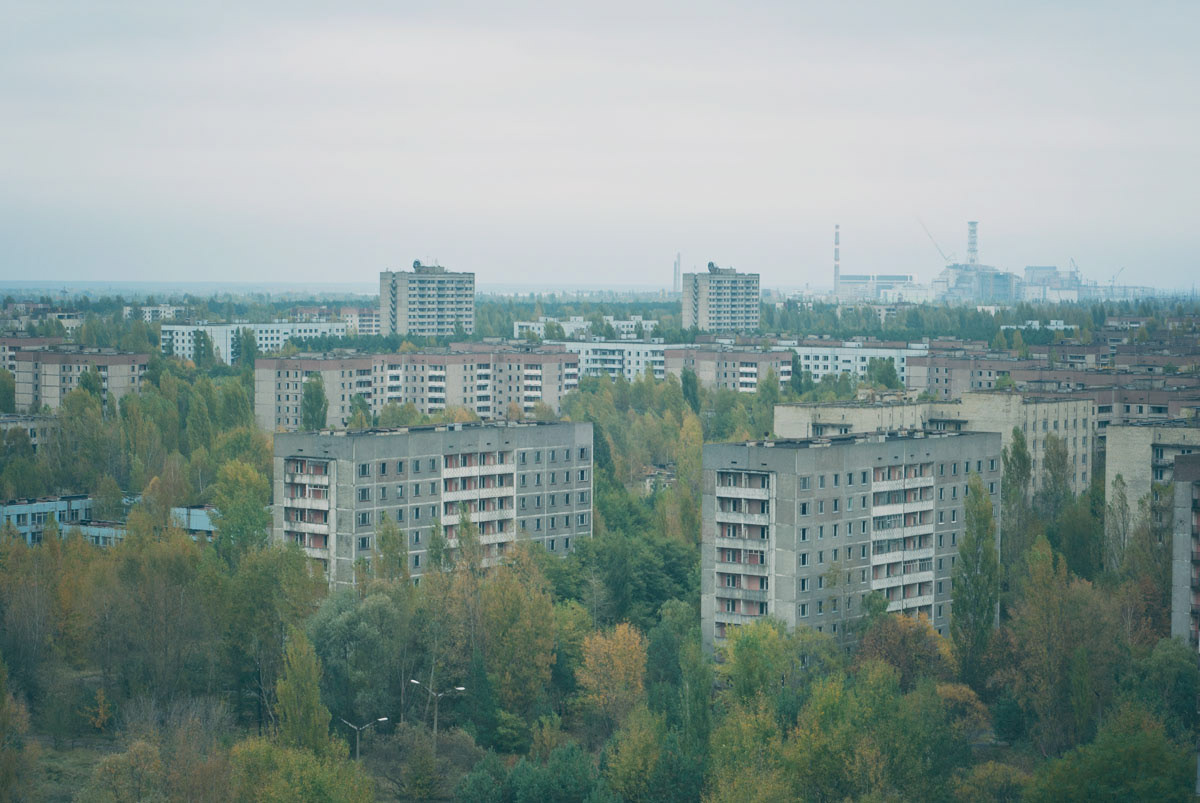
The town of Pripyat - built solely to house the plant workers - is a true ghost town.
People left in a rush leaving personal items behind, believing they would be returning for their belongings soon. It has been as they left it for 20 years, save for some vandalism by the government in an attempt to prevent looters and remove the incentive for locals to return. Windows were broken across the town to prevent radiation building up within the buildings.
When the disaster happened many citizens of the town gathered on a bridge between the Chernobyl plant and Pripyat which overlooks the reactors, watching events unfold whilst unaware of the danger. They all died within weeks of the accident.
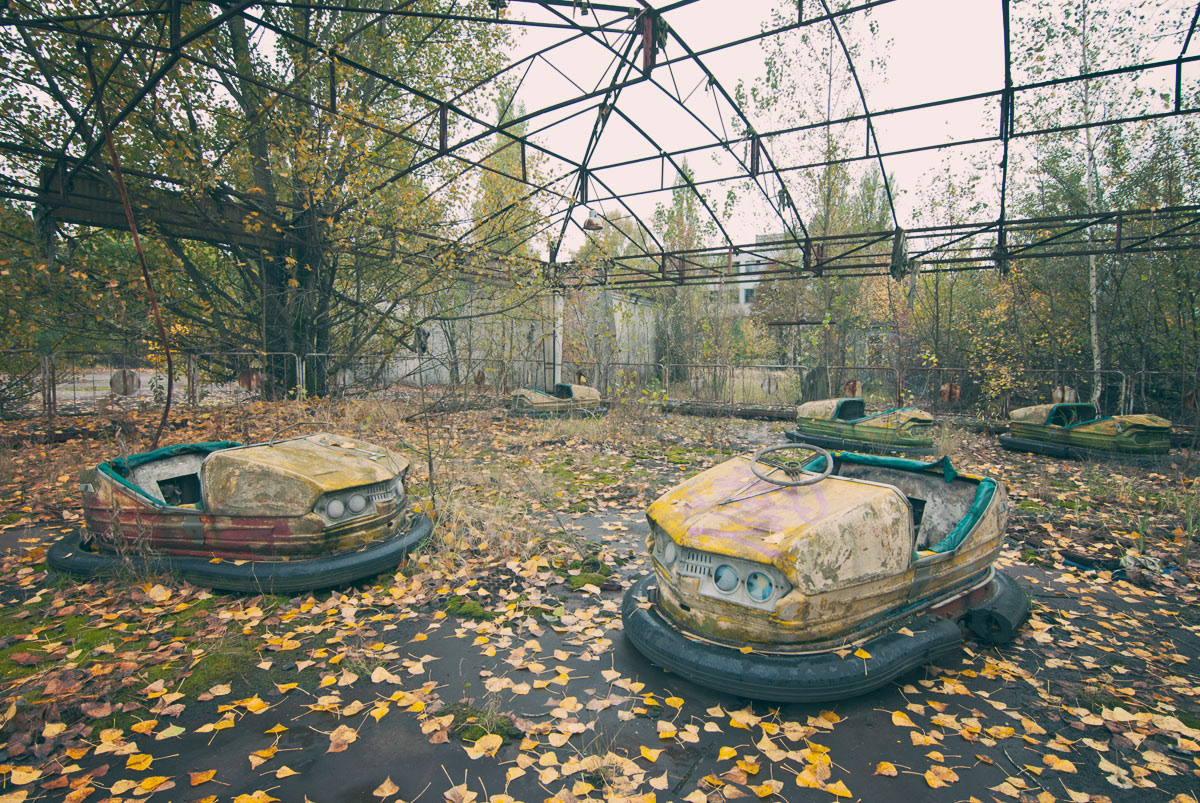
The funfair was due to be opened during the May Day celebrations, but after the disaster the fair was opened for a couple of hours on April 27th to keep the citizens distracted prior to the announcement of the impending evacuation.
It took 3 days to evacuate the town.
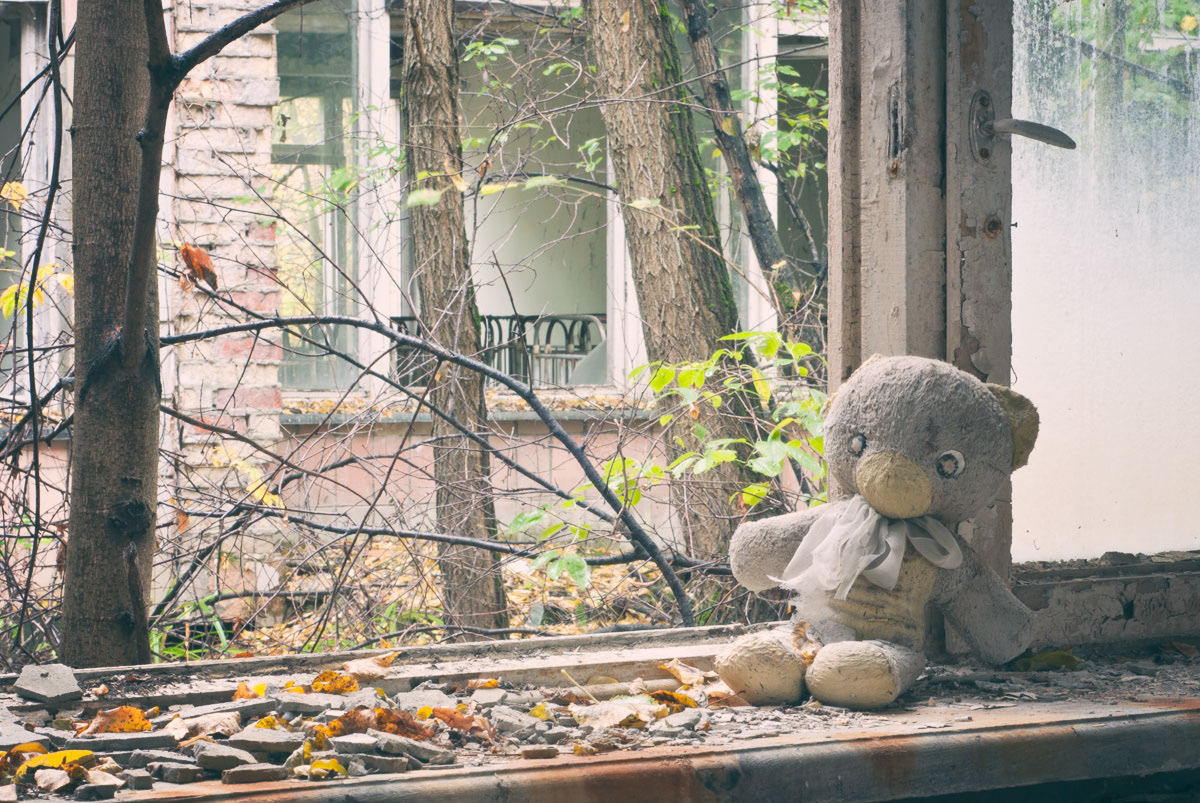
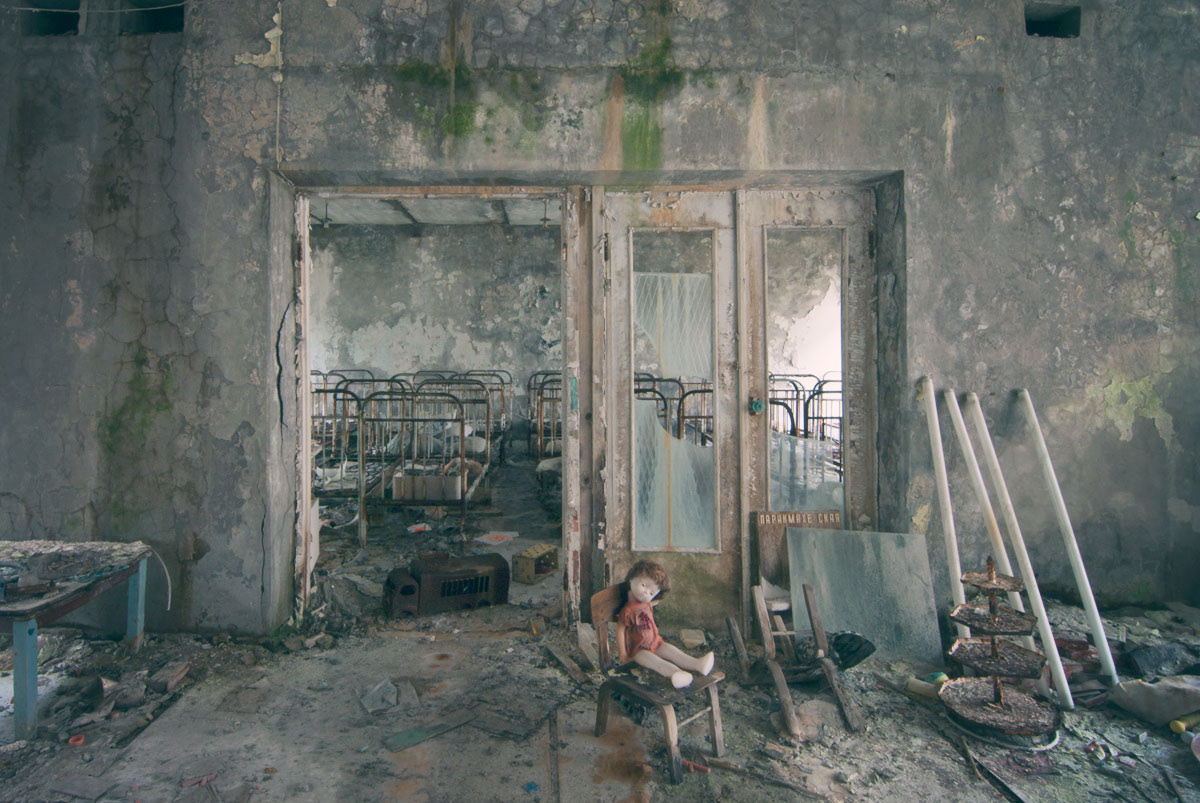
The many kindergartens are some of the hardest hitting buildings in the exclusion zone, strewn with toys, cots, shoes, and photos of the children in class.

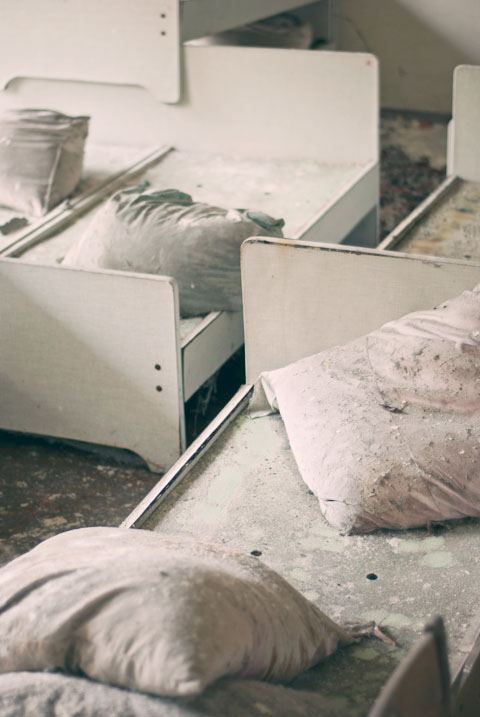
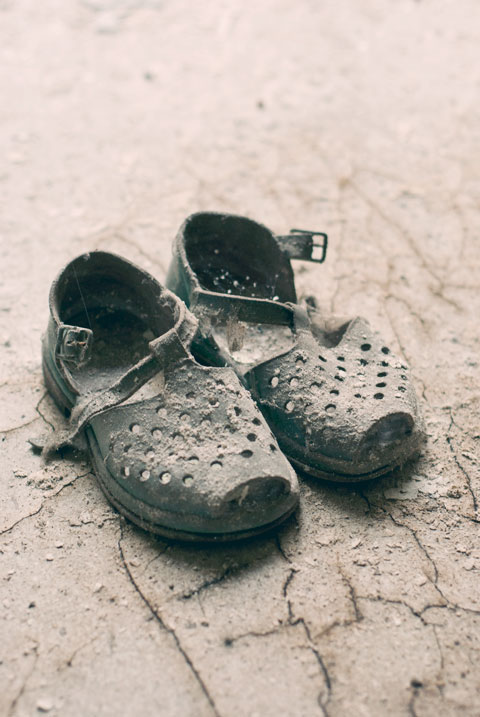
Discarded in a heap of old paperwork and files, this photo of a class from the Cheburashka Kindergarten was a particular reminder of the loss and devastation that occured here.
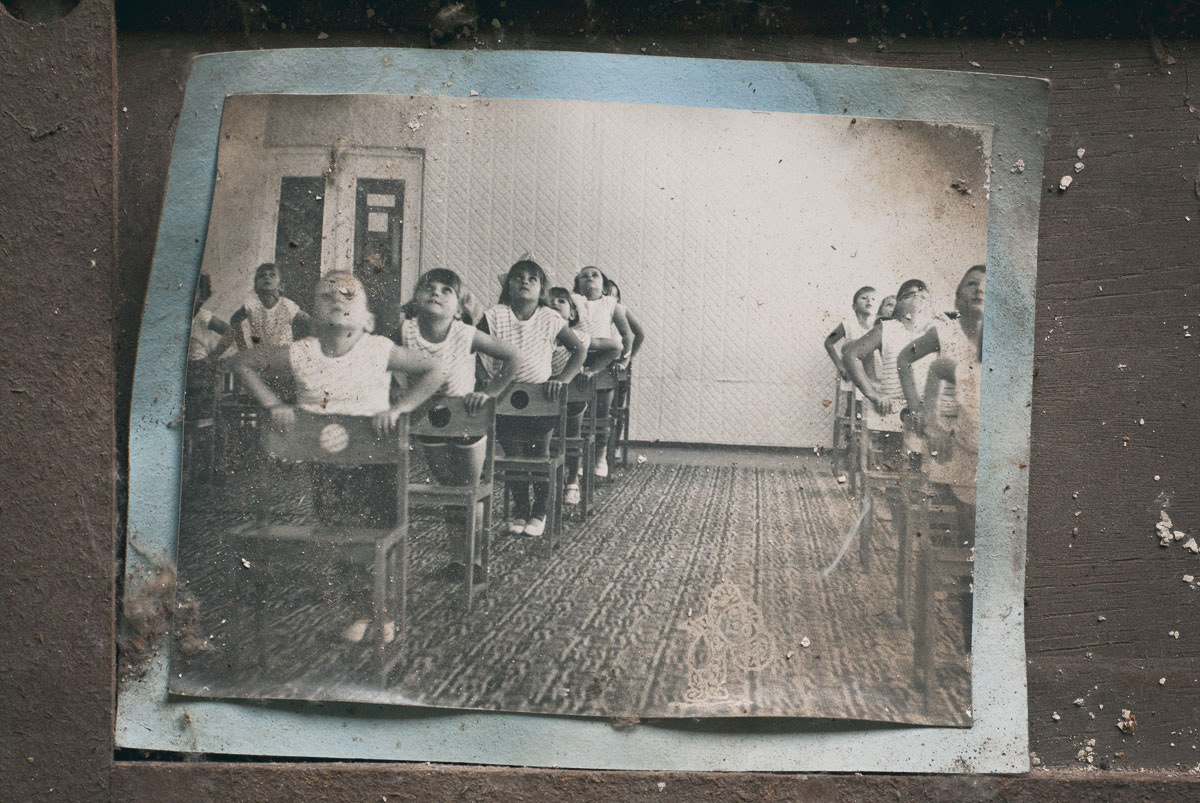
The canteen floor of Middle School No 3, one of the larger schools in Pripyat, is covered in child-sized gas masks - a hangover from the cold war where the government was worried about how high-profile a target the NCPP was.
Each public building was supplied with enough gas masks to provide for the people within in the event of an attack, and can be found across Pripyat in varying sizes, and in particularly large numbers in kindergartens and schools.
The masks provide another sinister overtone to the already eerily disquiet town.
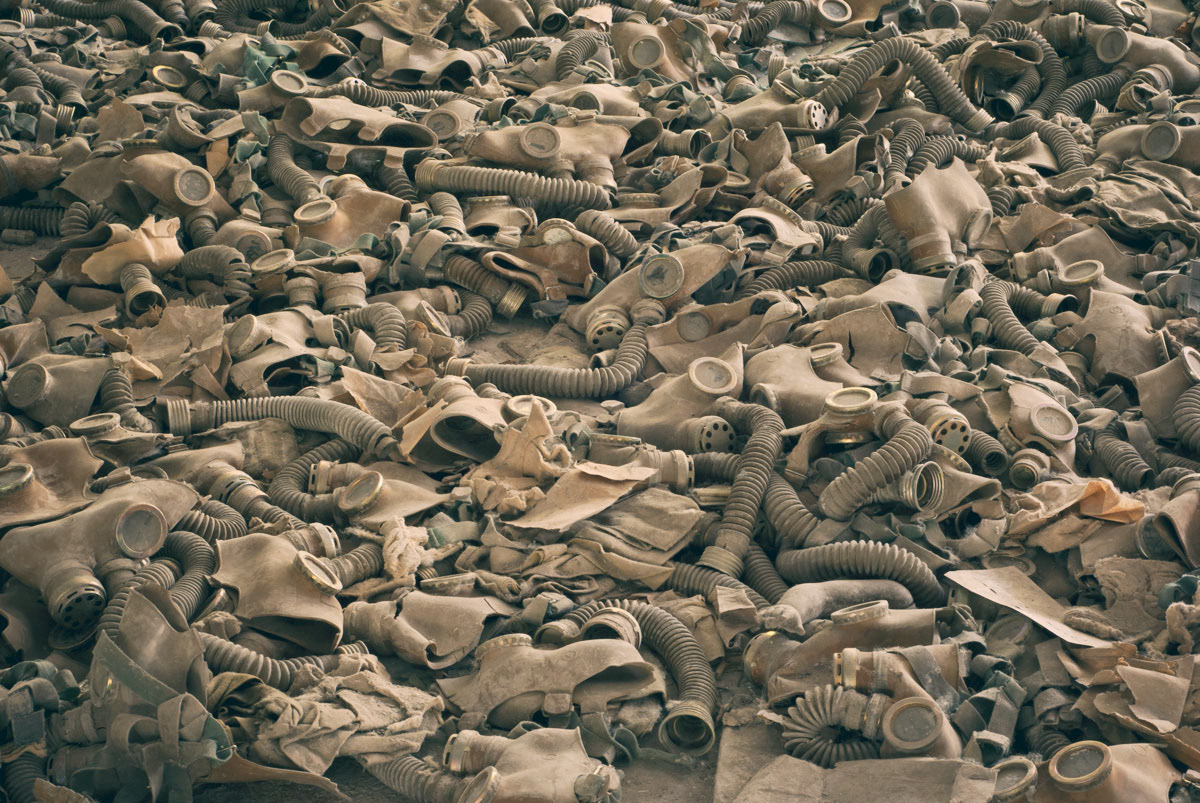

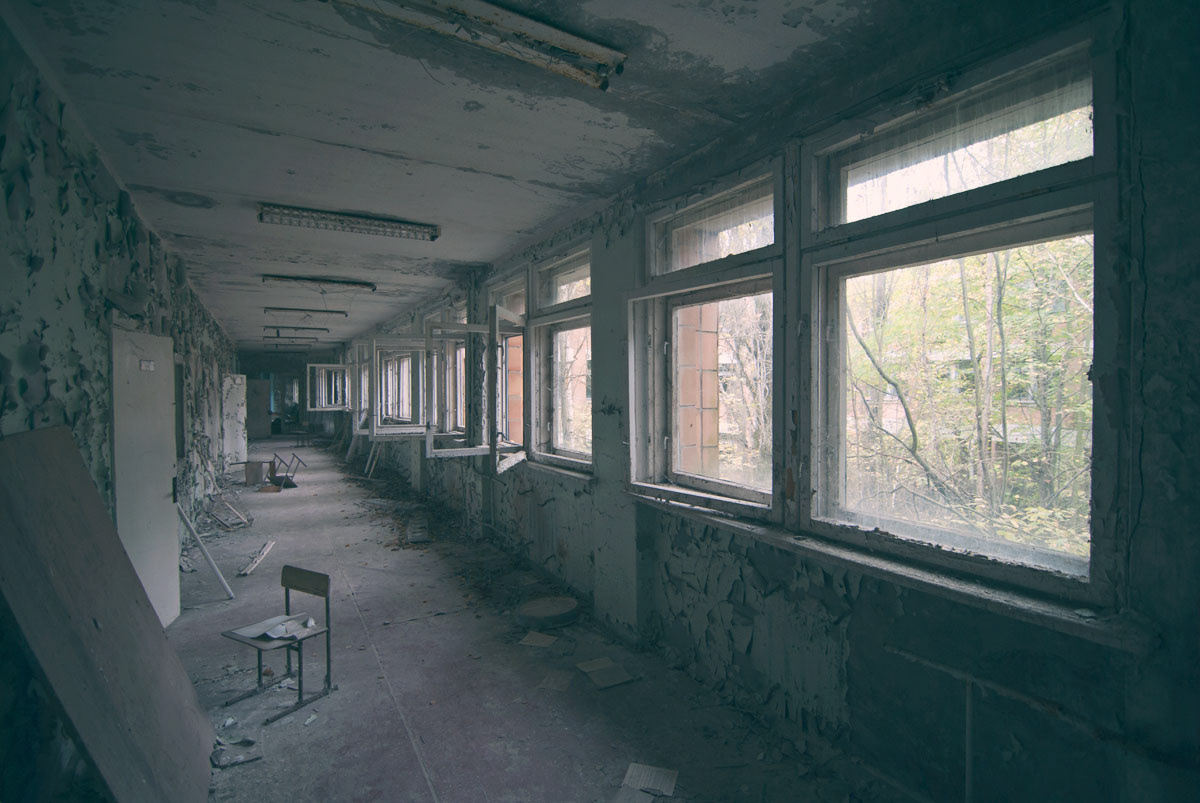
The basement of the hospital in Pripyat is one of the most radioactive locations outside of the reactor. After the accident the firefighters who were first on scene were taken to the hospital and their fire-protective suits are still lying in the basement today, too radioactive to be moved. Even in full protective gear you can spend no more than 30 seconds in the basement safely.

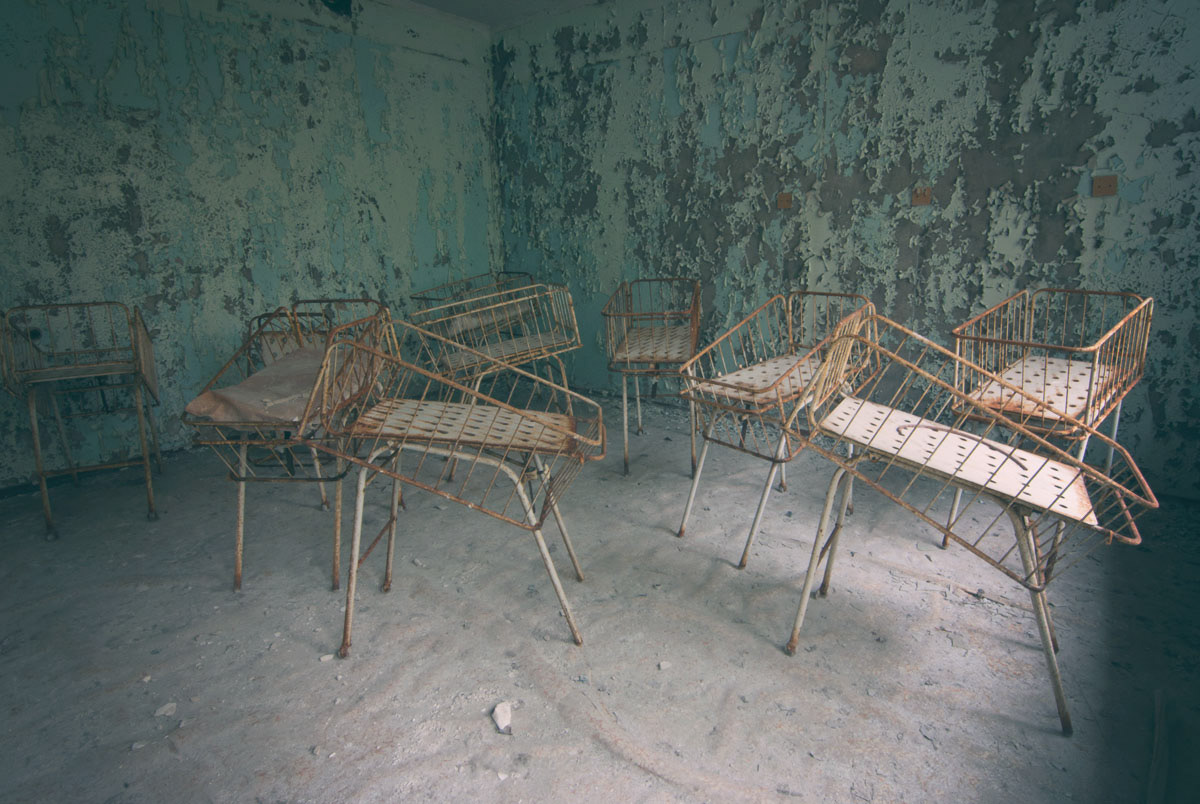
Little peices of ironwork or old posters and paperwork hint at the communist and soviet inspired designs of the era throughout the town.

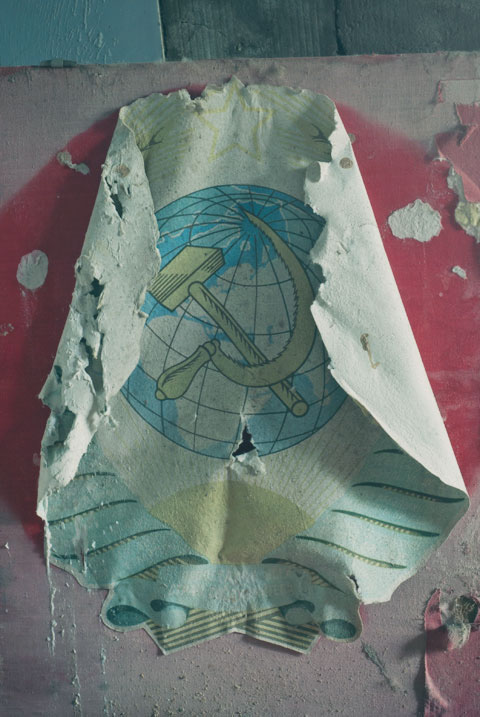
Even before the accident Chernobyl was a closed zone and Pripyat was built solely to house the workers of the plant. They could not leave the zone without acquiring a visa. In return they lived in the most modern town in the Ukraine, provided by the Soviet state. The fun fair, cinema, theatre, sports halls with an olympic swimming pool, hospital, numerous schools and kindergartens were all unheard of in such a small town in a Communist nation, making this a truely unique location already.
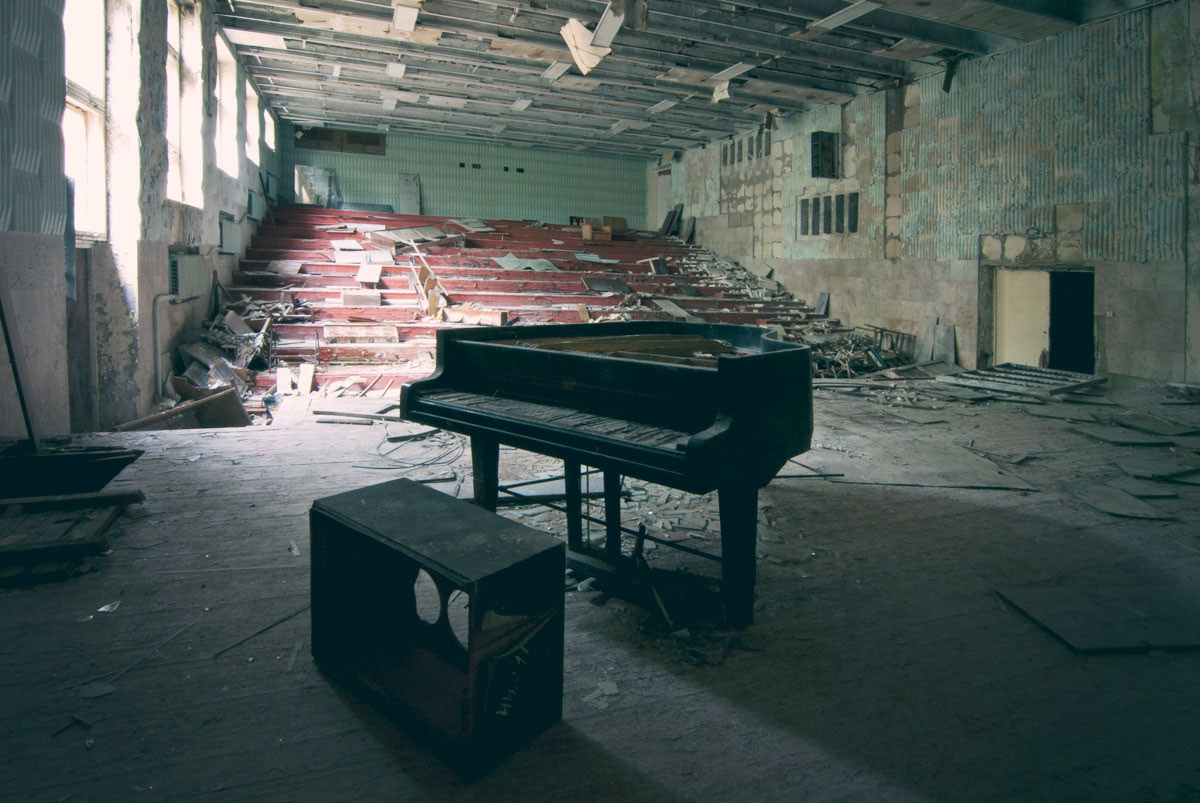
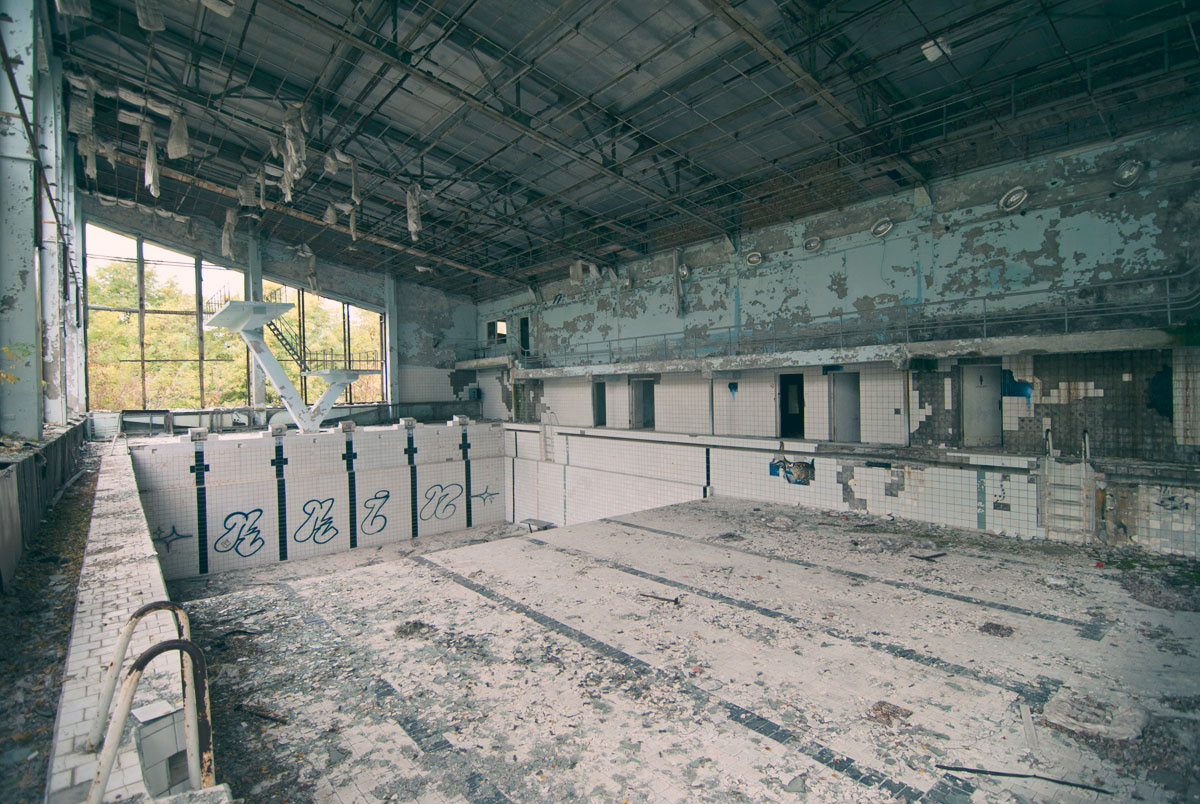
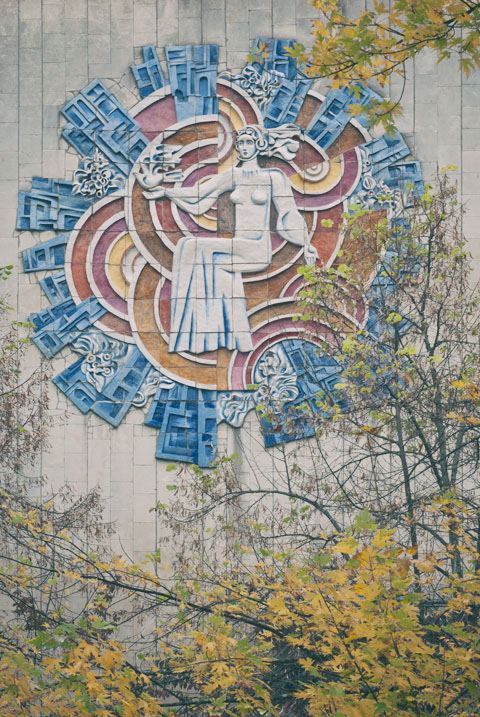
Yanov railway station was the vital passenger pickup point for those arriving by train into Pripyat in the hours after the Chernobyl Nuclear Power Plant catastrophe. The irradiated carriages and engines remain to this day.

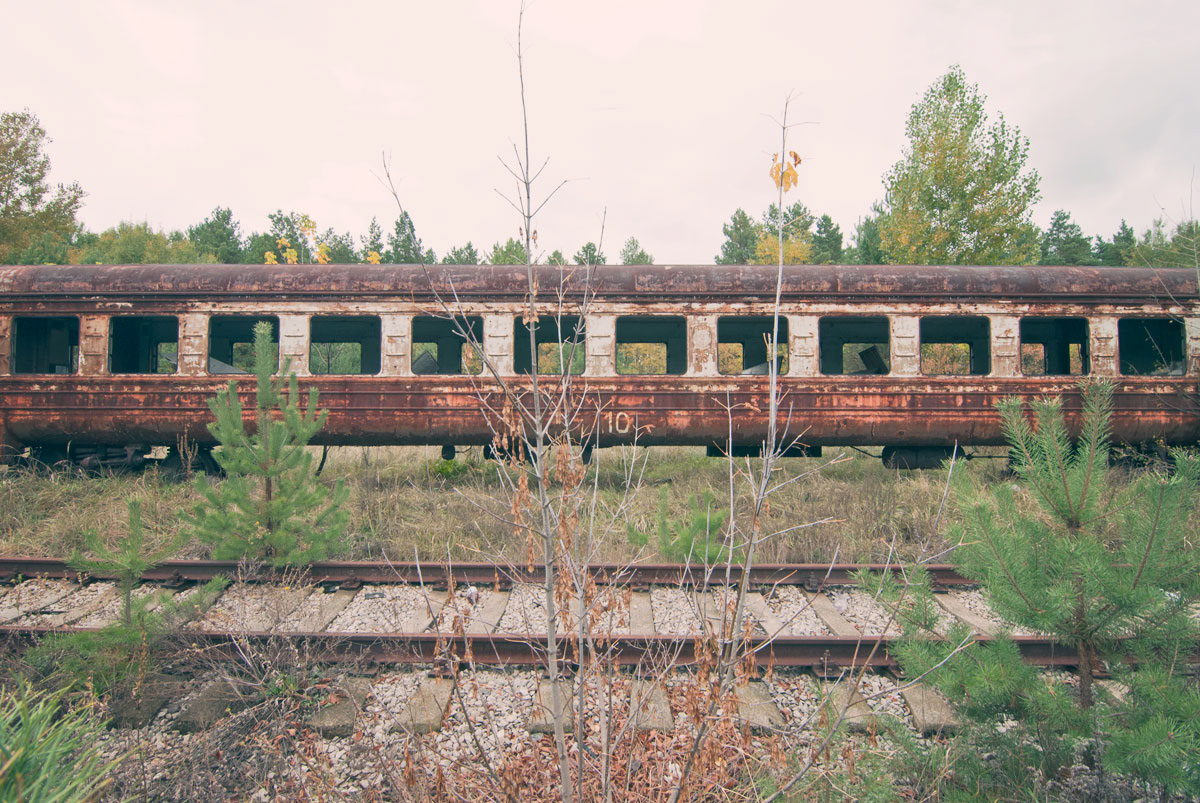
After the Chernobyl accident a vast number of vehicles were used around the site to aid with the clean-up or to report on the events unfolding. This is the Buryakovka graveyard for those non-military vehicles such as trucks, cranes, bulldozers, helicopters and so on. The majority of the vehicles have been buried due to their extremely high radioactivity.
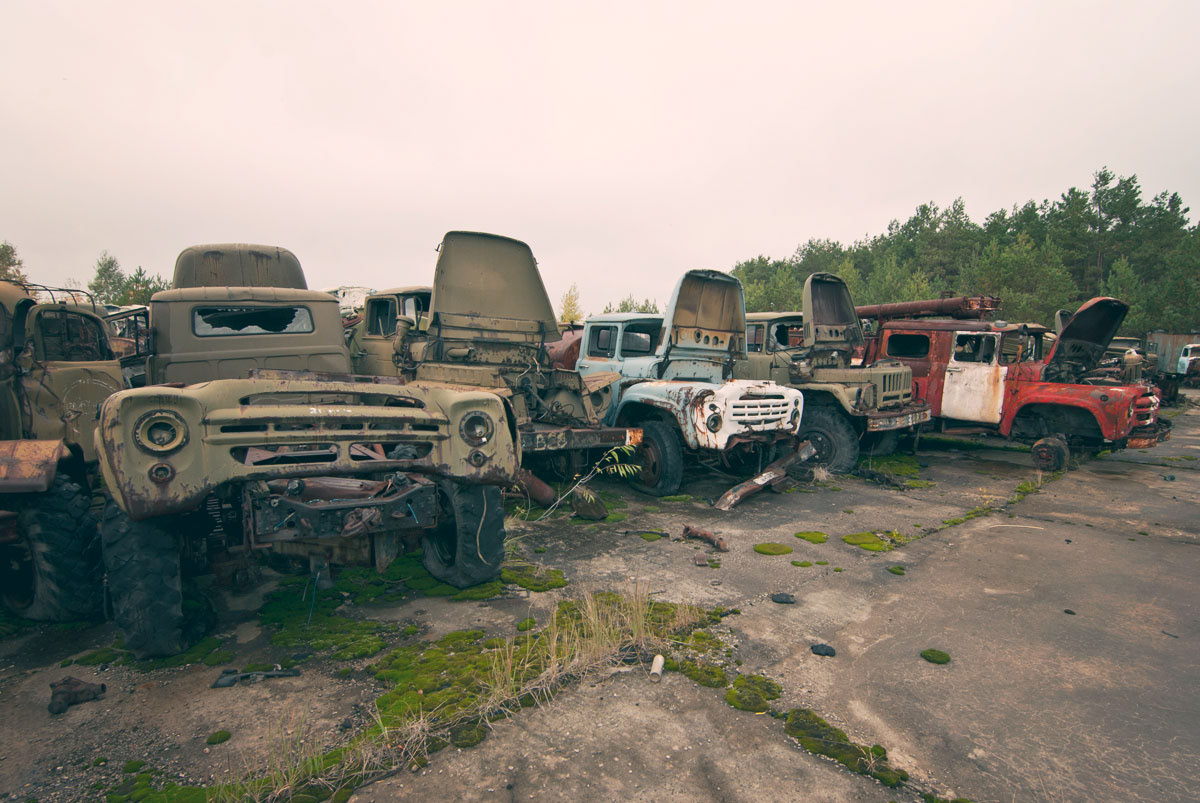

Moss and plantlife now break through the concrete and expand beyond their beds. Wild animals thrive in the quiet town, with horses, deer and boar seen by local soldiers frequently, as well as smaller creatures.
It is unlikely that the village will ever be inhabited by humanity again. The condition of the buildings has decayed too extremely over nearly 30 years, and tests are still ongoing as to the radioactivity of the 30 mile area and wildlife therein.


